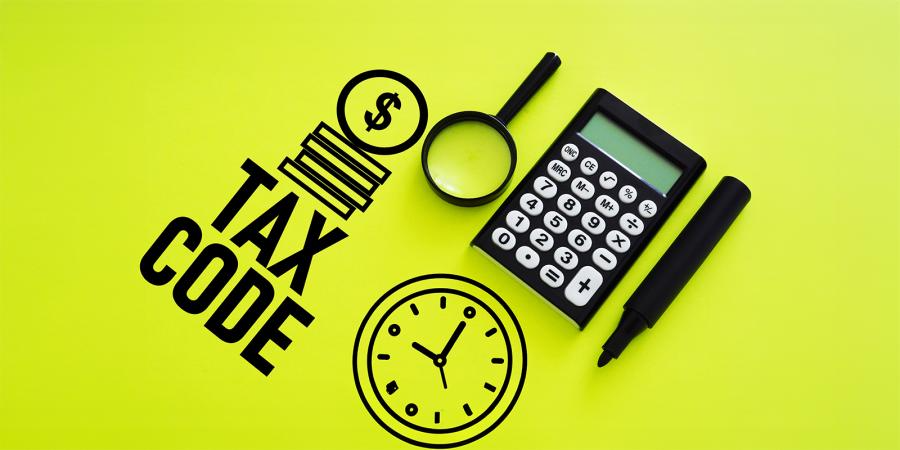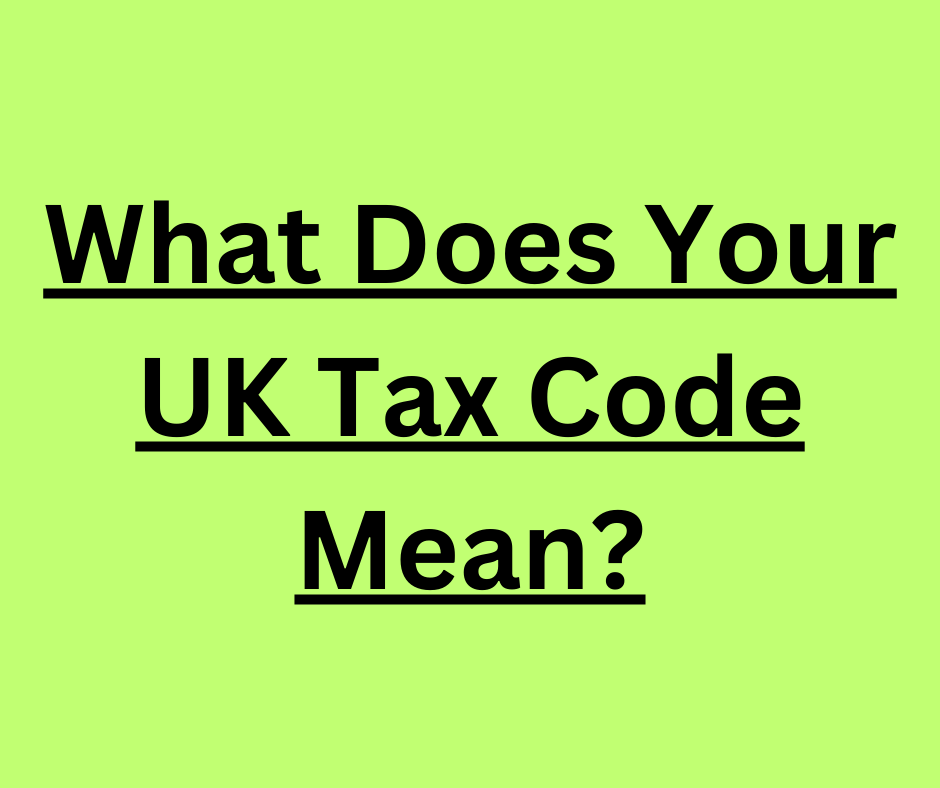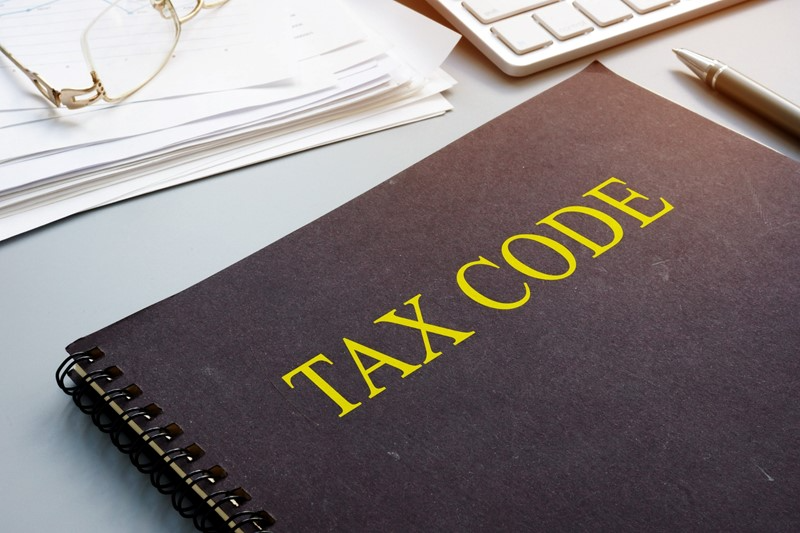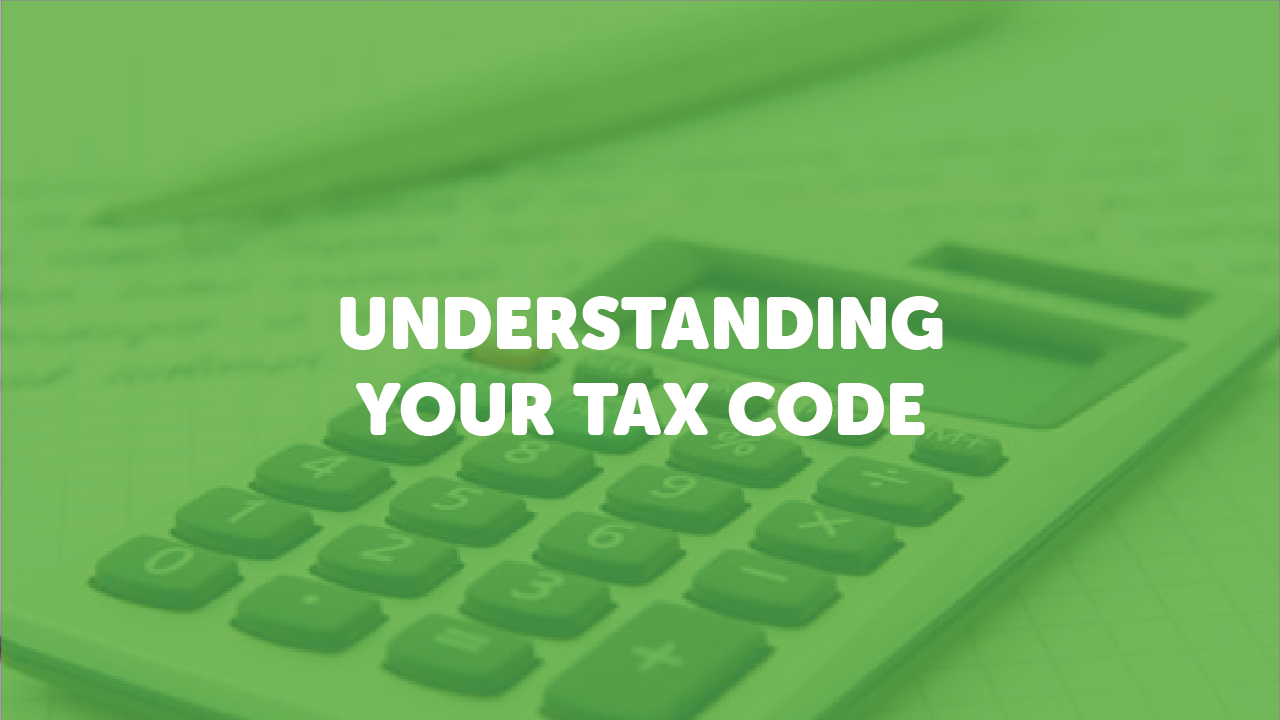If you’ve recently looked at your payslip and felt something seemed off—maybe your take-home pay dropped or you’ve been taxed unexpectedly—your tax code could be the culprit. In the UK, your tax code (such as the common 1257L tax code) plays a vital role in determining how much Income Tax your employer deducts from your salary through PAYE (Pay As You Earn).
A tax code is issued by HMRC (His Majesty’s Revenue and Customs) and tells your employer how much tax-free income you’re entitled to in a given tax year. When this code is wrong, it can result in you paying too much—or too little—tax. Either situation is a headache: overpayment ties up your money unnecessarily, while underpayment could land you with a surprise bill later.

Common errors with tax codes:
- You’re suddenly paying much more (or less) in tax without explanation
- You’ve changed jobs recently and notice a “1257L W1” or “M1” next to your code—this indicates an emergency tax code
- Your code has strange letters like BR, D0, K or 0T with no clear reason
- You’ve received benefits like a company car or health insurance and weren’t taxed for them
- HMRC has issued a new code but your employer hasn’t updated it yet
Each year, millions of people in the UK are affected by incorrect HMRC tax code numbers, especially after starting a new job, having multiple sources of income, or changing employment circumstances. It’s one of the most commonly searched payroll concerns, alongside topics like VAT number verification and emergency tax recovery.
Fortunately, spotting and fixing an incorrect tax code isn’t as hard as it sounds. In this guide, we’ll walk you through how to check if your tax code is right, what different codes mean (like the 1257L tax code), and how to fix any errors with HMRC.
Tax Codes Explained
A tax code is a short combination of numbers and letters issued by HMRC (His Majesty’s Revenue and Customs) that tells your employer or pension provider how much Income Tax to deduct from your pay. It’s one of the most important details on your payslip, yet it’s often misunderstood.

Example: The 1257L Tax Code Meaning
The most common tax code for the 2024/2025 tax year is 1257L. This code means you’re entitled to the standard £12,570 tax-free Personal Allowance, and you qualify for standard tax deductions (without any special adjustments).
Tax Code Meanings: What Those Letters and Numbers Really Mean
Your tax code typically consists of:
- Numbers – These indicate how much tax-free income you’re allowed in a year. For example:
- 1257 means £12,570 tax-free
- To find the number: HMRC takes your personal allowance and divides it by 10
- Letters – These show HMRC-specific instructions to your employer about how to tax you:
- L – You’re entitled to the standard tax-free Personal Allowance
- M – You’ve received a transfer of 10% of your partner’s Personal Allowance (Marriage Allowance)
- N – You’ve transferred 10% of your Personal Allowance to your partner
- BR – Basic Rate: All income from this job is taxed at 20% (no allowance applied)
- D0 – All income is taxed at 40% (higher rate)
- D1 – All income is taxed at 45% (additional rate)
- K – You have untaxed income that exceeds your allowance (e.g. company benefits or underpaid tax)
- W1/M1 – Emergency tax code: Applied when HMRC doesn’t have enough information, often seen in new jobs
What your code tells your employer
Your tax code instructs your employer how much tax to deduct before paying your salary. Based on your code:
- They calculate your tax-free allowance spread across the year
- They apply tax rates only to the income above this allowance
- If you’re on an emergency tax code like 1257L W1 or BR, they may deduct more tax until your correct code is applied
This system works fine—if your tax code is correct. But if it’s wrong, your employer may deduct too much tax, or none at all, putting you at risk of underpaying and receiving a demand from HMRC later. Understanding your HMRC tax code number helps you verify if you’re being taxed correctly and when to contact HMRC to fix any issues.
Common Mistakes Leading To Incorrect Codes
Even though HMRC issues tax codes based on the best information it has, mistakes can—and often do—happen. If your tax code is wrong, you may be overpaying or underpaying Income Tax, which could lead to financial problems or unexpected tax bills.
1. Starting a New Job or Having Multiple Jobs
When you start a new job and your employer doesn’t receive a P45 from your previous employer, they may apply an emergency tax code such as 1257L W1/M1. This means you’re taxed on a week-by-week or month-by-month basis, without accounting for your full annual tax-free allowance.
If you have two or more jobs, HMRC may apply a BR or D0 tax code to the second job, which taxes all your income at the basic or higher rate with no Personal Allowance.
2. Receiving Work Benefits (Benefits in Kind)
If you receive perks from your employer—such as a company car, private medical insurance, or other benefits-in-kind—they can affect your tax code. HMRC may adjust your Personal Allowance downward to account for the taxable value of these benefits.
For example, a company car valued at £5,000 per year might reduce your tax-free allowance from £12,570 to £7,570—resulting in a different HMRC tax code.
3. Changing Income Levels or Sources
If your income increases significantly, such as receiving a bonus, commission, or starting self-employment alongside your job, HMRC may adjust your code mid-year.
Similarly, if you begin drawing a private pension, the pension provider may apply a new code that’s either temporary or incorrect.
4. HMRC Estimating Your Earnings Incorrectly
Sometimes, HMRC uses outdated or incorrect information when calculating your code. For instance, if you had two jobs last year but only have one now, you might still be taxed as if you’re earning both salaries—leading to an unnecessarily high deduction.
This is particularly common after a job change, maternity leave, or a drop in working hours.
5. Being Put on an Emergency Tax Code
If your employer doesn’t have full information about your tax history—especially when you start a new job without providing a P45—they may apply an emergency tax code like 1257L W1/M1, BR, or 0T.
This code assumes you’re starting from scratch each pay period, so you don’t get your full tax-free allowance. This often leads to overpayment until your code is corrected.
6. Underpaid Tax from Previous Years
If HMRC finds that you underpaid tax in a previous year, they may adjust your current tax code to collect the difference. This usually appears as a K code, which means you’re being taxed on more than your income (to recover the debt).
For example, a K200 code means you’ll be taxed as if you had £2,000 additional taxable income.
Understanding these causes can help you spot errors early and correct them before they affect your finances. Whether it’s a 1257L tax code, emergency tax, or multiple income sources, it’s essential to check your payslip and use HMRC tools to verify your code.

Steps to Verify and Fix Errors
If you suspect you’re being taxed incorrectly—or just want to be sure—you can take a few simple steps to check your tax code and compare it against what you’re actually entitled to. This could help you avoid paying too much tax or prevent future issues like surprise bills from HMRC.
1. Check Your Payslip
Your tax code is listed clearly on your monthly or weekly payslip, typically near your name or National Insurance number. For example, you might see:
- 1257L – Standard tax code
- 1257L W1/M1 – An emergency tax code
- BR, D0, or K – Special codes applied for second jobs, high earners, or tax recovery
If your code includes W1 or M1, you’re likely on emergency tax, which means your tax-free allowance is being reset each week or month rather than being spread across the full year.
2. Look at Your P45 or P60
- Your P45 (given when you leave a job) shows the tax code used during your employment.
- Your P60 (issued at the end of each tax year) shows the total tax paid and the code under which it was calculated.
Compare these with your most recent payslip to see if there are any unexpected changes.
3. Log into Your HMRC Personal Tax Account
Your online HMRC tax account provides a full view of your:
- Current tax code(s)
- Estimated income for the tax year
- History of income and tax paid
- Any benefits in kind affecting your code
Visit: https://www.gov.uk/personal-tax-account
All you need is your Government Gateway login or to set one up. Once logged in, you can also update details if you spot something incorrect (such as out-of-date employment or benefit records).
4. Use HMRC’s Tax Code Checker
To find out whether your code is correct, HMRC offers a free tool: Check your Income Tax for the current year
This service allows you to:
- View the breakdown of how your tax code is calculated
- Confirm your tax-free Personal Allowance
- Understand deductions (e.g. company car, underpaid tax, etc.)
- See how your tax code will change if your details are updated
It’s the quickest way to verify if your current 1257L tax code or any other code reflects your real situation.
By checking your tax code regularly and using HMRC’s online tools, you can stay in control of your finances and avoid unnecessary overpayments or future tax corrections.
Change Tax Code HMRC
If you’ve discovered that your HMRC tax code number is incorrect—whether it’s an emergency tax code, a code for a second job, or a code adjusted due to wrong income estimates—don’t worry. Fixing it is usually straightforward. Follow these steps to correct your tax code and ensure you’re not overpaying (or underpaying) tax.
Step 1: Gather Your Information
Before contacting HMRC, have the following details ready:
- Your current and previous payslips
- Your P45 (if you recently changed jobs)
- Your P60 (for previous tax years)
- Details of any benefits-in-kind (e.g. company car, private health insurance)
- Information on other income sources (pensions, freelance work, etc.)
This makes it easier for HMRC to quickly verify your situation.

Step 2: Check What Your Tax Code Should Be
If you’re unsure, use the official HMRC tax code checker:Check your Income Tax for the current year
This tool shows:
- Your current Personal Allowance
- Adjustments for any untaxed income or benefits
- How your tax code has been calculated
If the figure looks wrong—such as your 1257L tax code being replaced by a K or BR code with no clear reason—you’re likely being taxed incorrectly.
Step 3: Contact HMRC
You can fix a wrong tax code by contacting HMRC directly via:
- Phone: 0300 200 3300 (Monday–Friday, 8am–6pm)
- Online: Log into your Personal Tax Account
When you contact HMRC, explain:
- What you think is wrong (e.g., “I’m on an emergency tax code but I’ve submitted my P45”)
- What your correct circumstances are (employment, benefits, income, etc.)
- Any supporting evidence or recent job changes
Step 4: Wait for the Tax Code to Be Updated
Once HMRC verifies your information, they will issue a new tax code to your employer or pension provider. This usually happens within 1–4 weeks.
- Your next payslip should reflect the new code
- If you’ve overpaid, the difference will usually be refunded via your wages
- If you’ve underpaid, the tax may be collected in instalments throughout the rest of the year (unless it’s a large amount, in which case HMRC may issue a separate bill)
Step 5: Reclaim Any Overpaid Tax (If Needed)
If you’ve been taxed incorrectly for a few months or even years, you can request a refund directly from HMRC. This can usually be done:
- Online via your Personal Tax Account
- Or by submitting a tax refund claim form
You can claim back tax for up to 4 previous tax years, so it’s worth checking past P60s if you’ve had a persistent issue.
By taking these steps, you can fix your incorrect tax code, avoid unnecessary deductions, and ensure your finances stay on track—whether it’s resolving an emergency tax code, correcting benefit-related deductions, or ensuring the correct application of your 1257L tax code.
Perfect! Here’s a clear and SEO-friendly section for:
What If You’re Still on Emergency Tax?
Being placed on an emergency tax code—like 1257L W1, M1, or 0T—is one of the most common reasons people overpay tax in the UK. These codes are temporary and often used when HMRC doesn’t have full information about your income or tax history.
If you’ve started a new job and noticed that your take-home pay is lower than expected, or your payslip shows an unfamiliar code, there’s a good chance you’re still being taxed under emergency rules.
What Is an Emergency Tax Code?
An emergency tax code is applied when:
- You start a new job and don’t provide a P45
- HMRC hasn’t received full details of your previous income
- You’re returning to work after a long break (e.g. maternity leave, self-employment, or a career gap)
Typical emergency tax codes include:
- 1257L W1 (Week 1)
- 1257L M1 (Month 1)
- 0T – No Personal Allowance applied
- BR – All income taxed at 20% (basic rate), often used for second jobs
These codes are non-cumulative, which means you don’t get the benefit of spreading your Personal Allowance across the full year. Instead, each payday is treated as if it’s your first—leading to higher tax deductions.
Why You Might Still Be on Emergency Tax
Even if you’ve worked at your new job for several weeks, you might still be on an emergency tax code because:
- Your employer hasn’t yet received an updated tax code from HMRC
- You didn’t provide a P45 when you joined
- HMRC is still processing your employment change
- There’s a mismatch in your employment or income history on record
How to Get Off Emergency Tax
To resolve the issue:
- Submit your P45 to your employer (if you haven’t already)
- If you didn’t get a P45, ask your employer to complete the ‘Starter Checklist for PAYE’
- Log in to your Personal Tax Account: https://www.gov.uk/personal-tax-account
– Check your income and job details
– Report any missing or incorrect info - Contact HMRC directly: 0300 200 3300
Once HMRC receives the correct details, they’ll send an updated tax code to your employer—often within 1–2 pay periods.
Will I Get a Refund If I’ve Overpaid on Emergency Tax?
Yes. Once your tax code is corrected:
- Your employer will automatically refund overpaid tax via payroll, or
- HMRC will send a refund directly to your bank or by cheque
In some cases, especially where the tax year has already ended, HMRC may issue a P800 Tax Calculation to confirm how much you’re owed.
How to Prevent Emergency Tax in the Future
- Always provide your P45 when starting a new job
- Keep your HMRC tax account updated with job changes
- Verify your tax code as soon as you receive your first payslip in a new role
- Check that your National Insurance number and VAT number (if self-employed) are correctly linked to your account
Still seeing 1257L W1 or another emergency code? Taking quick action can ensure your tax code is corrected promptly—and any overpaid tax is returned to you.
Conclusion
Getting taxed under the wrong HMRC tax code number—whether it’s an emergency tax code like 1257L W1, or something more complex like K or BR—can have a real impact on your finances. Fortunately, tax code issues are common, often easy to identify, and fully correctable.
By understanding how tax codes work, checking your payslip, P45, or HMRC personal tax account, and knowing when and how to contact HMRC, you can take control of your situation and make sure you’re paying exactly what you owe—no more, no less.
Remember:
- Check your tax code regularly
- Act fast if something looks off
- Use HMRC’s tools to stay informed
- Get your P45 in order when switching jobs
Whether you’re dealing with a 1257L tax code, a second job, VAT number verification issues (for self-employed individuals), or an underpayment from previous years, understanding your code is the first step toward peace of mind—and a correct paycheck.
Frequently Asked Questions (FAQs)
1. What does the 1257L tax code mean?
It means you’re entitled to the full £12,570 tax-free allowance for the year.
2. What is an emergency tax code?
A temporary code (like 1257L W1 or 0T) used when HMRC lacks full income info.
3. Why am I on an emergency tax code?
Usually because your employer didn’t get a P45 or you’ve just started a new job.
4. How do I stop being taxed on an emergency code?
Submit your P45, complete HMRC’s starter form, or update your info online.
5. What does BR, D0, or D1 mean on my tax code?
They mean all income is taxed at 20% (BR), 40% (D0), or 45% (D1)—with no allowance.
6. What does a K tax code mean?
You owe tax on untaxed income—your allowance has been reduced or reversed.
7. Where can I find my tax code?
Check your payslip, P45, P60, or your HMRC online account.
8. How do I check if my tax code is correct?
Use HMRC’s tax code checker or compare it with your payslip and income.
9. Will I get a refund if I overpaid tax?
Yes—via payroll or directly from HMRC.
10. How long does it take for HMRC to update my tax code?
Usually 1–4 weeks after contacting them.
11. How often do tax codes change?
They can change yearly or when your income, job, or benefits change.
12. Do I need a VAT number to check my tax code?
No—VAT numbers are for businesses and unrelated to PAYE tax codes.
13. Can I claim a refund for old tax years?
Yes—up to 4 years back.
14. Why is my second job taxed more?
HMRC may apply BR or D0 codes to second jobs—no Personal Allowance is used.
15. Can a tax code error affect my student loan repayments?
Yes—if you’re under- or over-taxed, it may affect how much is deducted.
